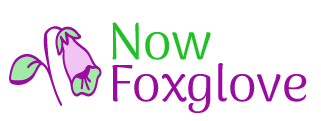Handwashing is one of the simplest and most effective ways to prevent the spread of infections. It’s a daily act we often perform without much thought. But here’s a startling truth: most people don’t wash their hands correctly. Even with widespread public health campaigns, improper hand hygiene remains a global issue with serious implications for personal and public health.
In this article, we’ll explore the science of handwashing, break down common mistakes, and explain how to do it right—based on WHO and CDC guidelines. By the end, you’ll understand why how you wash your hands matters just as much as how often you do it.
Why Handwashing Matters: More Than Just Clean Hands
Handwashing is a frontline defense against infections because our hands are the primary vehicles for pathogen transmission. According to the World Health Organization (WHO), proper hand hygiene can reduce diarrheal diseases by up to 40% and respiratory infections by 20%–25%.
Hands Spread:
- Viruses (e.g., influenza, norovirus, coronavirus)
- Bacteria (e.g., E. coli, Salmonella, Staphylococcus aureus)
- Fungi and parasitic pathogens
We touch our faces on average 23 times per hour, according to a study published in American Journal of Infection Control. That means a single lapse in hygiene can rapidly introduce pathogens to the eyes, nose, or mouth—key entry points for infection.
The Most Common Handwashing Mistakes
Despite good intentions, many people make critical errors that render handwashing less effective. Here are the most frequent:
1. Not Washing Long Enough
A 2013 study by Michigan State University found that only 5% of people wash their hands long enough to kill harmful germs. Most people wash for 6 seconds or less, while the recommended time is at least 20 seconds.
2. Skipping Important Areas
People often miss key parts of the hands, especially:
- Under the fingernails
- Between fingers
- Thumbs
- Backs of the hands
These areas can harbor bacteria even after a quick rinse.
3. Not Using Soap
Water alone is insufficient. Soap helps lift dirt, oils, and microbes off the skin and facilitates mechanical removal when rinsed. According to the Centers for Disease Control and Prevention (CDC), soap is essential for effective hand hygiene.
4. Touching Contaminated Surfaces After Washing
Recontamination happens when people:
- Touch the faucet with clean hands
- Use a dirty towel to dry off
- Immediately grab a contaminated surface like a phone
Using a paper towel to turn off the tap and open doors can prevent re-exposure to germs.
The Science of Effective Handwashing
Step-by-Step Technique (CDC & WHO Guidelines)
Step 1: Wet your hands with clean, running water (warm or cold), turn off the tap, and apply soap.
Step 2: Lather your hands by rubbing them together with the soap. Make sure to get:
- The backs of your hands
- Between your fingers
- Under your nails
- Around the thumbs
Step 3: Scrub your hands for at least 20 seconds. An easy way to time it? Hum the “Happy Birthday” song twice.
Step 4: Rinse your hands thoroughly under clean, running water.
Step 5: Dry your hands using a clean towel or air dryer.
Why It Works:
Handwashing with soap disrupts microbial membranes, breaks down oils, and physically removes pathogens. The friction and surfactant action of soap are essential in dislodging dirt and organisms from the skin.
What About Hand Sanitizer?
Alcohol-based hand sanitizers are a good alternative when soap and water are unavailable, but they’re not a complete substitute.
When They Work:
- Contain at least 60% alcohol
- Hands are not visibly dirty or greasy
When They Don’t:
- Against norovirus, Clostridium difficile, and certain parasites
- On soiled or sticky hands (food residue, oils, dirt)
The CDC recommends soap and water as the gold standard, especially in healthcare settings or during outbreaks.
Children and Handwashing: Building Habits Early
Children are frequent germ spreaders and are less likely to practice good hygiene unless taught correctly. A 2017 CDC study found that less than 60% of school-age children wash their hands before eating.
How to Teach Kids Properly:
- Use visual cues (color-changing soaps, posters)
- Make it fun (songs, games, charts)
- Be a role model—children mimic adult behaviors
Hand hygiene education programs in schools have been shown to reduce absenteeism by up to 50%, according to research published in Pediatrics.
Cultural and Global Handwashing Practices
While hand hygiene is universally important, practices vary:
- In some cultures, ritual washing is integrated into daily life (e.g., Islamic ablutions).
- Access to clean water and soap remains a challenge in low-income countries.
- According to UNICEF, in 2022, only 3 out of 5 people globally had basic handwashing facilities at home.
Promoting hand hygiene worldwide is not just a health issue—it’s also a matter of equity, infrastructure, and education.
Innovations in Hand Hygiene Technology
Modern solutions are making hand hygiene more effective and accessible:
- Smart soap dispensers with timers and sensors
- Antimicrobial coatings on public surfaces
- UV hand-scanning tech in hospitals to detect contamination
- Water-saving faucets with built-in soap delivery for areas with scarce resources
These innovations aim to make hygiene more intuitive, measurable, and environmentally friendly.
Conclusion: Small Habits, Big Impact
You might think handwashing is too basic to be important—but in reality, it’s a lifesaving habit. Improper hand hygiene contributes to millions of infections globally every year, many of them preventable. And while the act itself takes less than a minute, the impact is lasting.
By following proper technique, staying mindful of hygiene pitfalls, and educating others—especially children—you’re not just protecting yourself, but contributing to a healthier, more resilient community.
So the next time you step away from the sink after a quick rinse, ask yourself honestly:
Are you washing your hands the right way?
